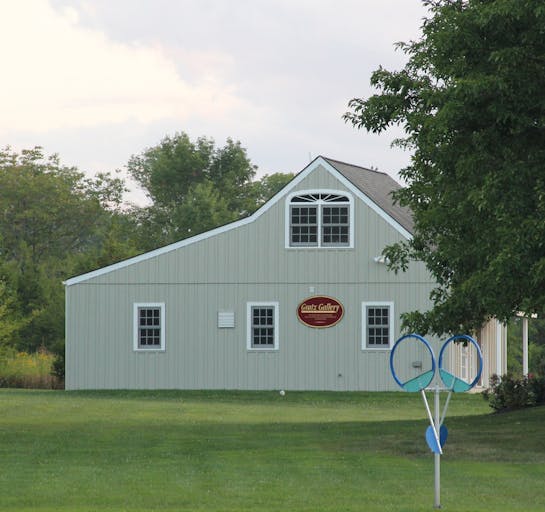Asher B Durand
1796 - 1886

Asher B Durand
1796 - 1886
Known as the "father of American landscape painting", Asher Durand was the major exponent of the Hudson River School style of painting. However, he did not take up painting with any seriousness until he was age forty. His early career was engraving, and in 1823, he earned much distinction for his engraving of John Trumbull's 1787 painting, The Declaration of Independence.
Durand was born in Jefferson Village, now Maplewood, New Jersey to a family of eleven children supported by the father, John Durand, who was a watchmaker and silversmith. Working with his father monogramming watches and crafting silver, young Asher Durand developed engraving skills, which determined the early years of his career. At age 16, he went to Newark, where he apprenticed to Peter Maverick, and five years later, they formed a partnership in New York City from 1817 to 1820. There, as a result of his success with the Trumbull painting as well as other commissions, he "was known as the country's best engraver". (Zellman, 116) This distinction brought him many commissions for banknotes, landscapes and portraits, and also allowed him money enough to pay the rent for his own studio. In 1826, he became one of the founding members of the National Academy of Design. He was also a co-founder of the New York Drawing Association, the New York Sketch Club and the Century Association.
Meanwhile, his good friend and frequent sketching partner, Thomas Cole, was encouraging Durand to give up print-making for painting, something that may not have taken much persuasion as apparently he had become "disenchanted with engraving" (Boettcher 252). In 1837, Cole, then the most famous landscape painter in America, and Durand took a sketching trip to Schroon Lake in the Adirondacks, and at that time, Durand became committed to landscape painting, which meant a major change in his career. On this trip and numerous others with Cole that included the Catskill and White Mountains, he did many oil sketches and watercolor studies, which he used later for the panoramic paintings that became his signature work.
Friendship with Lumen Reed, a New York grocer, led to patronage that supported Durand during his transition. To make money, he did much portraiture, primarily of prominent Americans including a series of all the United States Presidents to that time. He also did some genre scenes.
From 1840 to 1841, he traveled in Europe with three engraver friends who would also turn to landscape paintings. These future painters were John Kensett, John Casilear, and Thomas Rossiter. In London, Durand was especially influenced by the serene, atmospheric work of John Constable, and commented that his painting expressed "more of simple truth and naturalness than any English landscape I have ever before met with". (Boettcher, 252).
He returned to America to paint exclusively American landscapes, which were visual counterparts of his belief that God was in nature and that painting nature was a way of worshiping God. In his 'Letters on Landscape Painting' for an 1855 edition of Crayon, magazine, he espoused these theories and urged American landscape painters to develop their own style and to go directly into nature and paint, leaving behind the studio manipulation of sketches and contrived allegory of European landscape painters.
In 1849, just after the death of Cole, who had died the previous year, Durand painted Kindred Spirits to immortalize Cole and transcendentalist poet William Cullen Bryant. The title is from a phrase of a sonnet by John Keats.
Like Cole and Bryant, Durand was deeply religious, and found in nature the manifestation of God and the expression of that relationship through sublime landscape painting. In Kindred Spirits, Bryant depicted the two very fashionably dressed men standing on a ledge over an abyss where a misstep could land them in a canyon far below. The day is sunny; the view is both panoramic and intimate and is, in many ways, suggestive of a pleasant outing in the Catskill Mountains. But atmospheric light countered by heavy shadows and geographical contrasts of flatness and depth create a sense that nature has its own agenda. The fact that Cole and Bryant are barely discernible and are much diminished by these surroundings is ironic and appropriate. Although Cole and Bryant were two of the most famous men of their era, Kindred Spirits reflects their humility---their belief that humans were of much less importance than nature, where humans commune with god. In other words, nature is the primary focus rather than merely serving as a backdrop for human activity.
Because it so aptly embodies the philosophy of the Hudson River School and references the three major exponents of its underlying philosophy, Kindred Spirits is likely the most representative work of the Hudson River School of painters. (1)
After the death of Thomas Cole, Asher Durand became the pre-eminent Hudson River style painter. Of him it was written: "his unconventionalities became new conventions."
In recognition of his increasing reputation, which included writing and teaching as well as painting, he was elected President of the National Academy of Design, serving from 1845 to 1861. In 1866, his painting was exhibited at the Paris Salon. Three years later, he retreated from the attention he was receiving in New York and moved to his childhood home of Jefferson Village in New Jersey. He died there in 1886.
Sources: Askart.com
